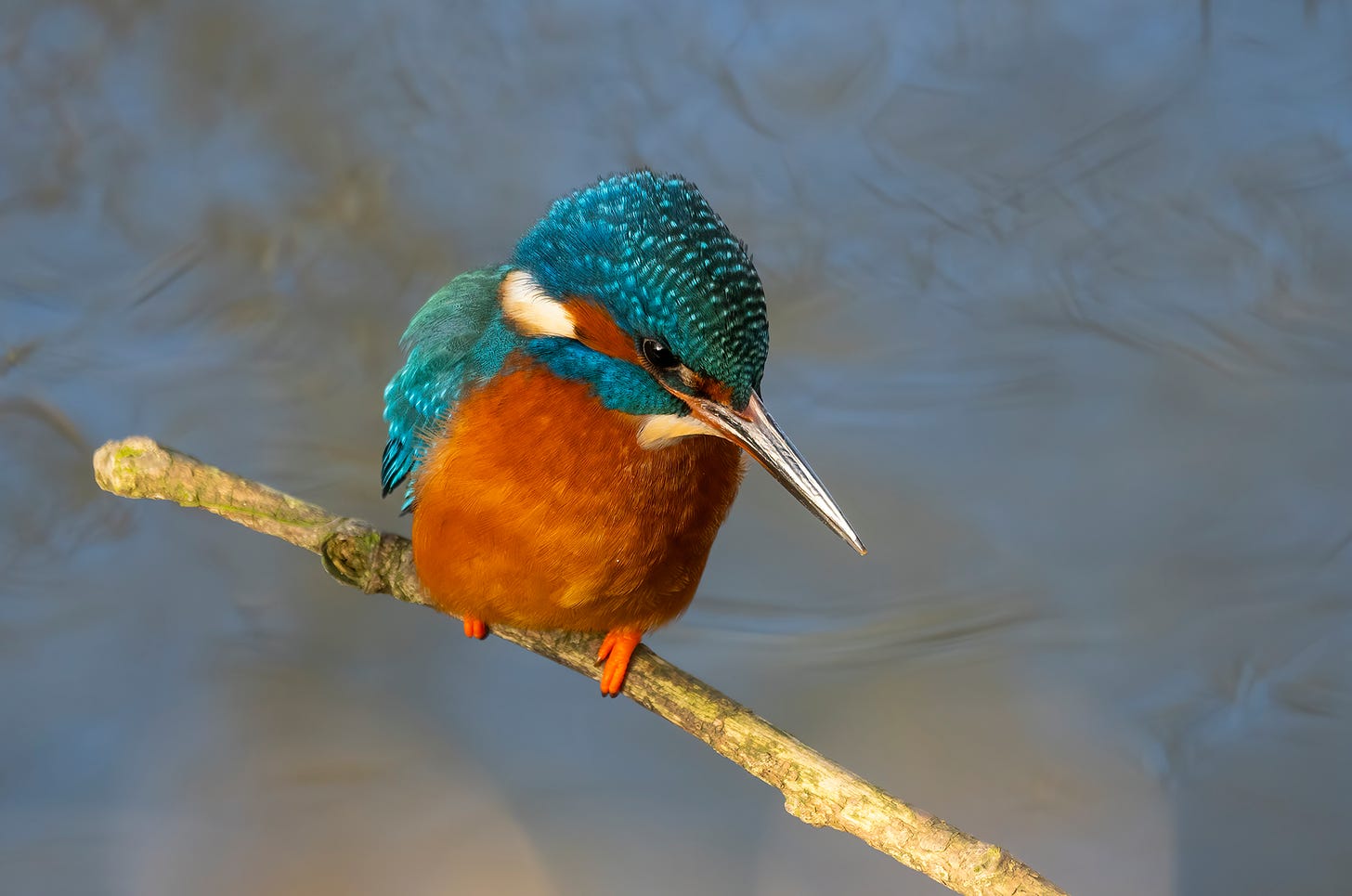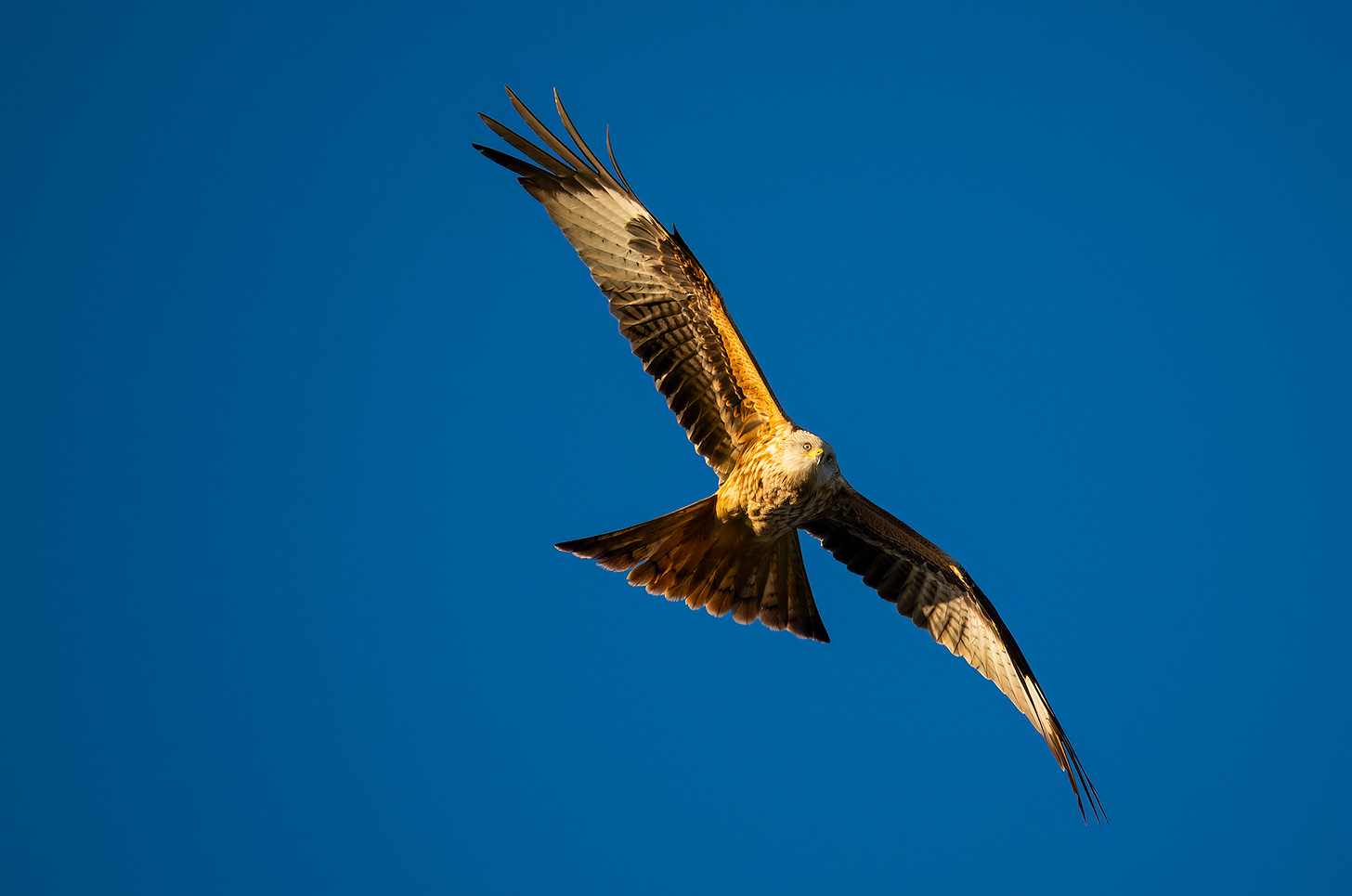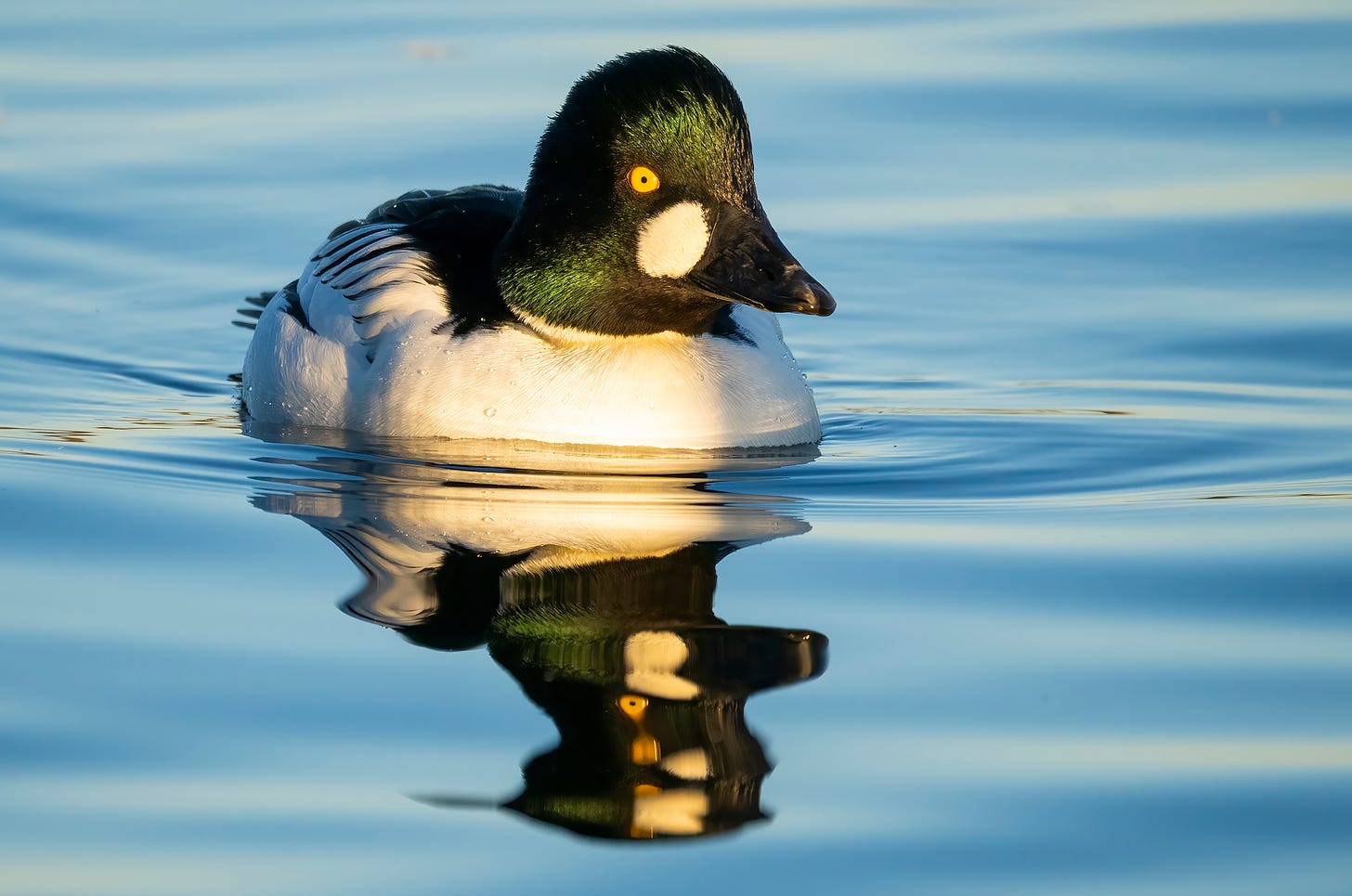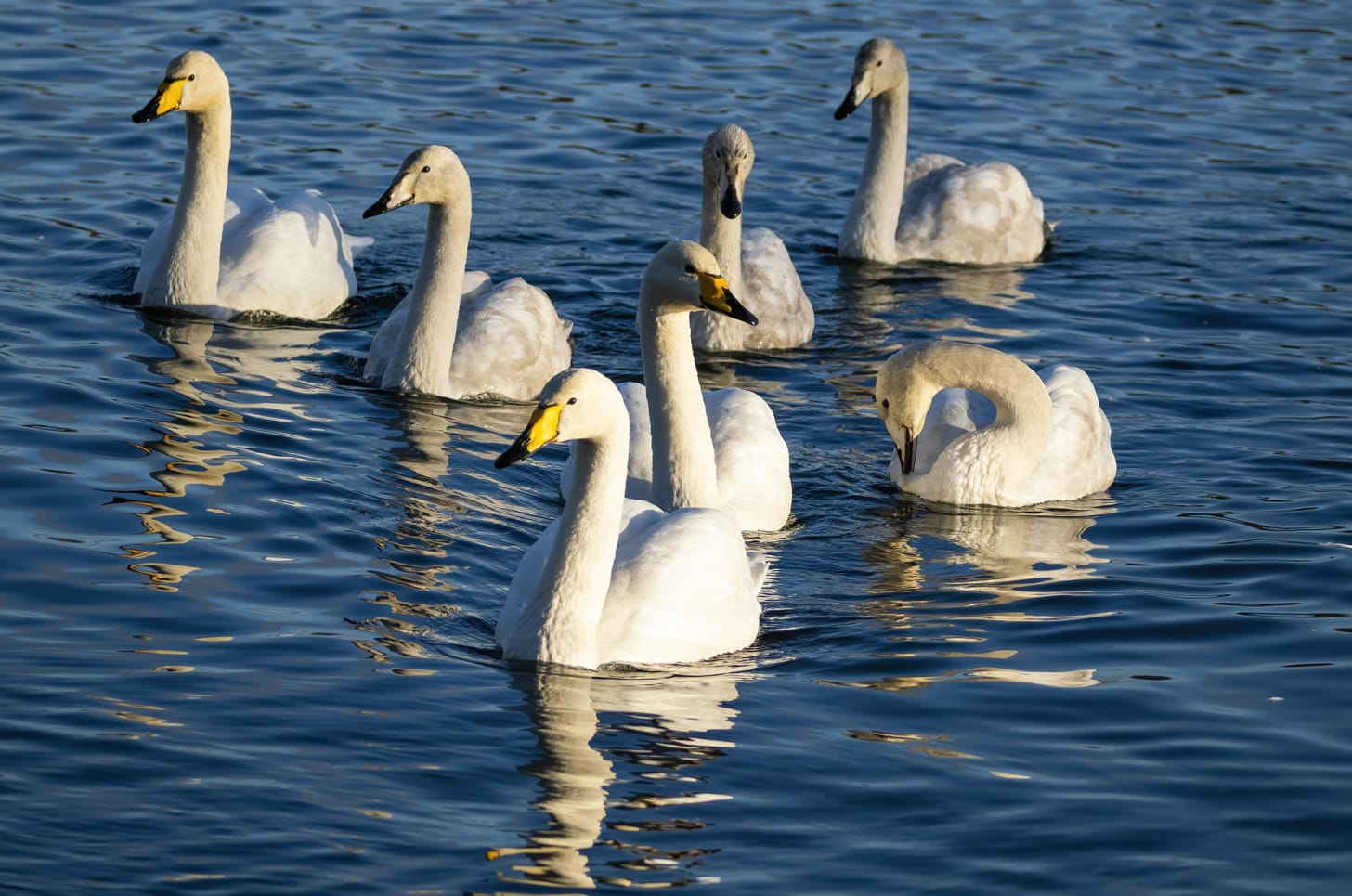January 2024 Viewfinder
There is calm after the storm and wildlife to blow you away in this month's Opposite View Wildlife Photography newsletter.
We hear a lot about the calm before the storm, but what about the stillness that arrives in its wake?
After a peaceful start to 2024, with everyone recovering from the end-of-year festivities in sub-zero temperatures, the winter storms loomed on the horizon. What did that mean for my wildlife photography? I went from trying not to fall on my backside in the icy conditions while photographing goldeneye ducks to fighting to stay upright during the wind gusts on my lunchtime walk.
The wildlife on my local patch did not welcome the change in the weather either. In my opinion, strong wind is the worst weather for photographing deer. Even individuals who know me well and are calm around me on any other day become flighty in those conditions. And you would as well - if you had to rely on your hearing and sense of smell to avoid a predator creeping up on you. The wind crashing through the trees and blowing the scents around understandably makes the local roes nervous. Even the carrion crows and jackdaws seemed frustrated getting blown from rooftop to rooftop. The gulls were the only ones unmoved by the gales, harnessing the wind effortlessly for their own amusement.
But you didn’t sign up for this newsletter to get an extended weather report from Glasgow, did you? So, where am I going with all this meteorological chat? Well, as the horse says in The Boy, the Mole, the Fox and the Horse, the best thing about storms is that they end.
And when the bad weather has passed, I recommend grabbing your camera and getting outside. During this window of calm, birds and mammals must make up for what they have missed while hunkered down during the storm. They need to feed.
The day after Storm Isha had died down, while humans began their clear-up operation, the trees and hedges still standing on my local patch came alive with the calls of small birds. The woods were full of flocks of long-tailed tits, great tits and blue tits. Treecreepers and goldcrests flitted from trunk to trunk. A shadow from above was the briefest glimpse of a sparrowhawk taking advantage of the dropping winds and the potential prey bouncing around in the tree canopy.
It is not the first time I have noticed this post-storm frenzy of activity. Back in January 2022, the storms came and went in waves. I kept an eye on the forecast during the weekend, and it looked like we would have a couple of hours of respite one afternoon. We headed straight to a local location good for kestrels and buzzards because I calculated that they would be taking the opportunity to hunt during the quieter weather. I was, happily, proved right. Although the buzzards stayed in the distance, getting mercilessly mobbed by carrion crows, a kestrel was on the hunt much closer to us, and I managed to capture a couple of images of her with her catch.
So, I advise you to wait patiently for the storm to pass and take full advantage of the wildlife that inevitably appears afterwards.
Have you taken this approach? Did it work? Have waxwings been blown into your local supermarket car park? Or have you seen any interesting species that have been swept into your area by a storm? Let me know in the comments – I’d love to hear from you.
For now, I’ll leave you with an image captured between recent storms. I spotted a kingfisher in the river running through my local park on a grey and blustery day. I was on a short lunch break and was without my camera (always carry your camera, dear reader!). Cue multiple swear words muttered under my breath. Frustrated, but always the wildlife optimist, I returned the next day when the weather had improved. I stood in the same spot by the river and soaked up the vitamin D from the emerging sun. After five minutes of seeing nothing but dog walkers and leaves fluttering down the river, this little lady appeared and blew me away. This time, I was ready to capture her in all her glory - the serenity after the storm.
Best wishes,
Rhiannon
Opposite View Wildlife Photography
Through my lens
Let's go spy a kite - photographing red kites in Hertfordshire
A red kite glides into view and is swiftly joined by another. They cruise towards us on the breeze, and a pre-Christmas stroll with the family becomes a rare opportunity to watch and photograph these stunning birds up close. I say rare opportunity, but we are walking in a part of Hertfordshire where a sky full of kites is as unusual as a sky full of pigeons.
In this blog, I share images from recent encounters with red kites near my childhood home and reflect on how our relationship with this stunning raptor has changed.
Species Spotlight
Goldeneye duck – the cavorting Casanova
At the start of my wildlife photography journey, I wasn’t at all bothered about capturing images of ducks. In fact, I can't think of a subject I was less interested in. All these years later, I have developed an appreciation of wildfowl, although some species grab my attention more than others. One of these is the goldeneye.
In this blog, find out what the goldeneye duck has in common with James Bond and get tips on photographing its dynamic courtship displays.
And finally…
You may have noticed that this is my first newsletter of 2024, and there is no mention of resolutions or plans for the year ahead. There is a good reason for that – I haven’t made any! Ok, that’s a bit of an exaggeration – I do plan to continue focusing on my local wildlife, with an emphasis on the local roe deer. But, apart from that, I have decided to see where nature takes me.
And, although I wouldn’t call it a resolution, I have promised myself that I will add my sightings to BirdTrack - as I was particularly rubbish at this last year. Since the app has been updated and is a dream to use, I have no excuse for not recording the birds I see – in my area and further afield – and contributing to this valuable citizen science project. It also lets me see what other people have spotted. So, if you haven’t made your resolution yet, head to the British Trust for Ornithology (BTO) website to find out how to get involved.
Keep in touch
Thanks for reading this! If you have any comments or questions, opportunities for photography or if you would like to use any of my images, please leave a comment. I’d love to hear from you.
You can also follow me on:








So glad you were able to appreciate our Red Kites, every time we see them now, we think of you. Loved the nod to Mary Poppins 😉xx